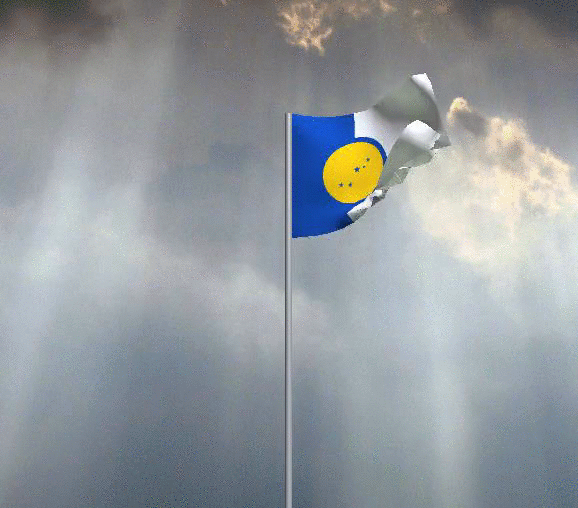

# loop through files, join them to image array, and write to GIF called 'wind_turbine_dist.gif'įile_path = os.path.join(png_dir, sorted_files)įor jj in range(0,int(end_pause/frame_length)): Sorted_files = sorted(image_file_names, key=lambda y: int(y.split('_')))įrame_length = 0.5 # seconds between framesĮnd_pause = 4 # seconds to stay on last frame Plt.close('all') # comment this out if you're just updating the x,y data # lower dpi gives a smaller, grainier GIF higher dpi gives larger, clearer GIF # make png path if it doesn't exist already
Flag gif maker how to#
How to make a GIF using Python import matplotlib.pyplot as pltĭef gif_maker(gif_name,png_dir,gif_indx,num_gifs,dpi=90): I use this function for scientific animations where looping is useful but immediate restart isn't. imageio also allows you to set the frame rate, and I actually wrote a function in Python that allows you to set a hold on the final frame. Imageio.mimsave(os.path.join('movie.gif'), images, duration = 0.04) # modify duration as neededĪs one member mentioned above, imageio is a great way to do this. Images = list(map(lambda filename: imageio.imread(filename), filenames)) If filename.endswith( ('.jpeg', '.png', '.gif') ):įilenames.sort() # this iteration technique has no built in order, so sort the frames Path = '/Users/myusername/Desktop/Pics/' # on Mac: right click on a folder, hold down option, and click "copy as pathname" Note: you'll want to make sure your frames have some sort of index in the filename so they can be sorted, otherwise you'll have no way of knowing where the GIF starts or ends import imageio
Flag gif maker install#
Install imageio like this: python3 -m pip install imageio I came across this post and none of the solutions worked, so here is my solution that does workġ) No explicit solution as to how the duration is modifiedĢ) No solution for the out of order directory iteration, which is essential for GIFsģ) No explanation of how to install imageio for python 3 Shrinking the images reduced the size: size = (150,150) #images.extend(reversed(images)) #infinit loop will go backwards and forwards. # Numpy images of other types are expected to have values between 0 and 255. # Numpy images of type float should have pixels between 0 and 1. # images should be a list of numpy arrays of PIL images. # Write an animated gif from the specified images. # writeGif(filename, images, duration=0.1, loops=0, dither=1)
Flag gif maker code#
Here is the code I used: _author_ = 'Robert'įile_names = sorted((fn for fn in os.listdir('.') if fn.endswith('.png'))) It did seem to double the file size though.Ģ6 110kb PNG files, I expected 26*110kb = 2860kb, but my_gif.GIF was 5.7mbĪlso because the GIF was 8bit, the nice png's became a little fuzzy in the GIF states flags.I used images2gif.py which was easy to use. I've used Flags of the World page on the CIA Factbook to create waving flags of all world countries and waving U.S. Please see the Emofaces copyright page for more information. The Emoface designs remain copyright by You may use the flag waving animation generated using this page for non commercial personal use only, as long as credit is provided to as the source. You can do this by right clicking on them and select 'Save as.'. After this period they may be deleted without further notice.Īs the generated images may be deleted after 24 hours you will need to save them to your own computer if you want to continue using them. The generated Emoticons will stay on the server for at least 24 hours.

Your uploaded images will not be stored on the server after the Emoticons have been generated. As the actual flag bit is only 45 x 45 pixels, small images (300 x 300 pixels) will provide good results. You should be able to use any PNG, GIF or JPEG image as long as the resolution of the image isn't too high.


 0 kommentar(er)
0 kommentar(er)
